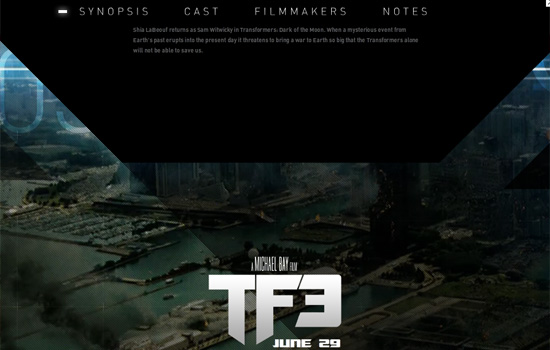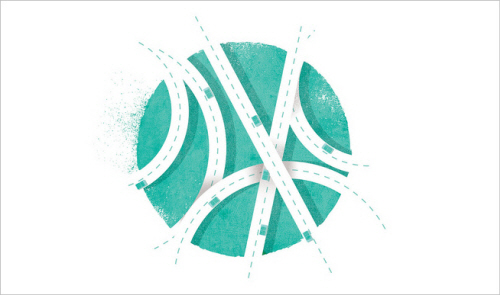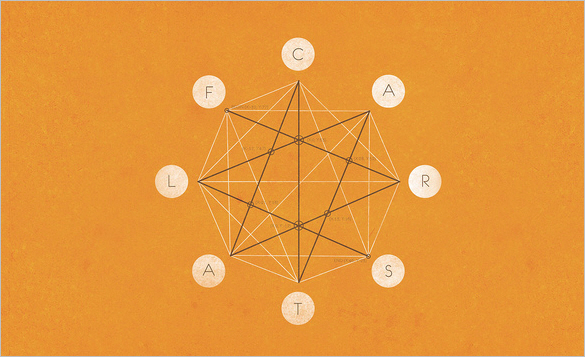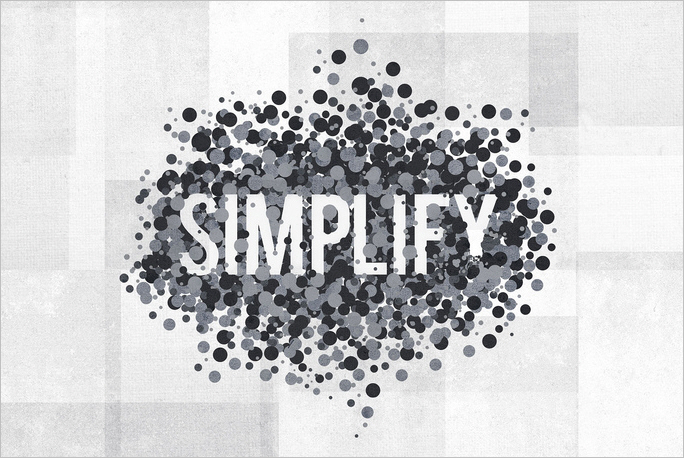The Medium Is The Message
Since the early days of communication, humanity has been captivated by the methods it uses to convey and preserve information. How we communicate with each other defines who we are and constitutes so much of what makes a culture and an individual unique.
Over the centuries, we have seen media evolve across a wide array of channels, from print to radio to television to the Internet. Each one of these channels, or media, has its own unique characteristics, much like the people who use them.
When it comes to understanding these various media, one of the best to learn from is Marshall McLuhan. Born in 1911 and passing in 1980, McLuhan had no opportunity to experience the Web the way we know it today, but that didn’t stop him from exerting a huge influence on it. It was McLuhan who first spoke about technology and communication having the ability to create a “global village.” As an early educator and pioneer of the study of communication and its evolution over time, McLuhan introduced a lot of observations about the impact of new forms of expression and media. Most notably, McLuhan’s expression “The medium is the message” has had a resounding impact not just on Web design but on mass media in general.
“The medium is the message” as a phrase sums up a much deeper communication theory, which is that the medium through which we choose to communicate holds as much, if not more, value than the message itself. At first, this concept might seem vague and indeed a lot to grasp. But I can honestly say that understanding the meaning behind these words revolutionized the way I approach Web design; not from a technical or procedural standpoint, mind you, but from a fresh mental perspective that provided clarity on how to approach and design for the Web.
On The Surface
McLuhan’s theory has certainly not been neglected or forgotten. On the contrary, it has been widely studied in a number of circles and applied to television, print and the Internet alike. While many people seem to grasp the general point, the deeper truth is often missed or misinterpreted. In order to get to this deeper meaning, exploring the general concept first may be necessary.
The central theory behind “the medium is the message” is that the medium through which content is carried plays a vital role in the way it is perceived. We no doubt see this with the Internet today, in the way we get our news compared to how we got it with print. But perhaps an even clearer illustration can be painted without reference to technology or communication at all.
Imagine, if you will, a deep well in the middle of a vast desert. The well is our medium (as the radio or Web would be), and the water is our message. A rich and reliable well in the middle of the desert would naturally become the hub of travel routes and even a sustainable population. The water by itself is of no use without the well. If it were inaccessible or people were unaware of its existence, it could not support life. The well, as a medium, delivers water to the people passing by or living nearby. As a result, the well becomes synonymous with water and life, despite really being just a hole in the ground.
A Real-Life Comparison
Building on this illustration of the well being a medium for the water, we can extend the theory to modern technology. Let’s compare a feature film to a website as we know them today. Communicating the same general content to the user in both media is possible. However, because the media are inherently different, we experience the content in entirely different ways.
A film is a linear experience. Everyone watching the film participates in the same preset series of a beginning, middle and end. We watch characters and stories unfold over the timeline, working towards a conclusion. Since the creation of film, this idea has been integral to the planning and development phases. All of this is determined by the medium, regardless of what the message may be.

Move the same content over to a website and the experience changes dramatically. In the context of a website, information is rarely passed to the user as a linear experience. Instead, character traits, back story and plot points might all be split up into different pages or sections. It is up to the user to decide how to consume the information and reach a conclusion. Just as a beginning, middle and end are a part of the entire film process, this segmentation and fluidity should be a part of the planning stages of a Web project.
Expanding Our Understanding
This is all well and good, but saying that we experience different media in different ways doesn’t really sound groundbreaking. A lot of people are inclined to take McLuhan’s theory here as a lesson learned and a day’s work done.
Well, sit tight because we’re just getting started in exploring how the deeper truth of “the medium is the message” can change the way you design and develop for the Web.

Going back to our example of water being delivered through a well, we can quickly draw a comparison to the impact that fresh water has on our society. In the same way, we can see how a new medium can affect us. Before the telephone, there was no such thing as having a conversation with a friend or colleague in another town or region, at least not without a journey that would span days or longer. Today, we are always just a phone call away from a friend or family member abroad. We even take for granted that we can be in touch with people so quickly.
Going further, we can ask whether there was such thing as a “global event” before mass media communication such as satellite links and the Internet. Today, we often cite various events as things that will “change the world,” but 100 years ago the entire world was not reachable. Before we had the ability to learn about natural disasters, wars, elections and technological achievements through mass media, a “global event” simply did not exist. As a result, we could argue not only that mass media is a tool to channel global events, but that it made them possible in the first place.

Think about it. Without the Internet, Justin Bieber would not exist to almost all of us. Of course, he would still be a part of the world, but without the medium that drove his success, a cure for Bieber Fever would be entirely unnecessary.
An Impact On Web Design
The real takeaway here is that Web designers are able to create tools, experiences, services and communities as a result of their medium. The Internet has a more powerful reach than any other medium in history, which in turn has equally large implications for its status as the message. As a message, the Internet preaches accessibility, expandability and instant satisfaction, things that we designers should keep in mind when approaching any project.
Think about how your projects will use the Internet, not as a medium but as a message. In the disaster that struck Japan this past spring, the Internet became the medium of choice in every way. From the people-finding tools introduced by Google to the relief websites and news coverage across the globe, websites stood out not because they were fashioned with HTML5 or designed responsively, but because they enabled us to be in touch with friends and family and to donate to the cause. New tools, trends and CSS3 gimmicks are a part of the medium, but they play mere supporting roles to the message.

This doesn’t mean we should minimize or eliminate design and aesthetics. Rather, designers should always consider how a design decision shapes the message. The very techniques we practice every day — using line, color, shape and other fundamentals — all play a role in the way the message is received. Using design principles to shape the tone and audience of a message, versus creating a stylish and trendy look, is what separates professionals from amateurs in our industry. Realizing your full potential as a designer has a lot to do with your ability to control the message.
Controlling The Message
We’ve come full circle, back to the original point of this article. As Web designers, how do we utilize McLuhan’s phrase “the medium is the message”?
It starts as soon as an idea or request for a project comes to us. As professionals, we need to guide our clients down the right path and show them how best to take advantage of the Internet. We need to recognize that Joe’s Hardware Store on the corner might not benefit as much from a domain name and website as it would from a Twitter and Facebook account or no Internet presence at all. If good ol’ Joe has no intention or need to market to anyone outside of his neighborhood, then the Internet’s message just isn’t necessary for him or his customers.

On the other hand, if Joe wants to market his patented new handsaw to a larger market and expand his business, then the Web might just be the place to do that. As a designer, you can help Joe harness the power of instant Web exposure, social marketing, online orders and all of the other fantastic tools that can help his business grow. Joe’s new website will be a beacon of Web standards: it will be responsive, elegant and unique. Of course, we may notice that none of these things actually earn Joe a lick more of money. Rather, the Internet, when used as a message to new customers, holds the real power.
Of course, this is just the tip of the iceberg with using the Internet to benefit a business, service or application. The gradual ubiquity of the Web makes this topic only more exciting and powerful. Staying true to the message that our medium presents goes hand in hand beautifully with building solutions that are adaptive and constantly expanding with technology.
As stated earlier, my tools, skills and process for designing and developing websites have always been evolving. Still, the motivating factor behind Web design is in the message. The message is what makes money, makes an impact or expands your reach. Without it, interest in websites and applications would never get off the ground.
The Takeaway
When all is said and done, it is important to remember two things about McLuhan and his teachings. First, the medium through which a message is experienced shapes the user’s perception of the message. Secondly, a medium can be the message itself if it is delivering content that would otherwise be impossible to access.

As you start projects and are approached for your professional opinion on how to harness the power of the Internet, always consider the message. Designers who jump into talking about how the latest and greatest trends can help a new project are missing the point. We use the Web to create beautiful and unique solutions that would have been impossible just a few years ago. As a designer, make sure you always respect the powerful message that this medium is.
Additional Resources
- A Checklist for Content Work An excerpt of Erin Kissane’s book The Elements of Content Strategy. A fantastic resource for taking online content to the next level and enhancing your message.
Further Reading
- Make Your Content Make a Difference
- Editing Tips For Business Web Content
- Content Strategy & Storytelling
- Content: A Blessing, A Bubble, A Burden


 Flexible CMS. Headless & API 1st
Flexible CMS. Headless & API 1st





